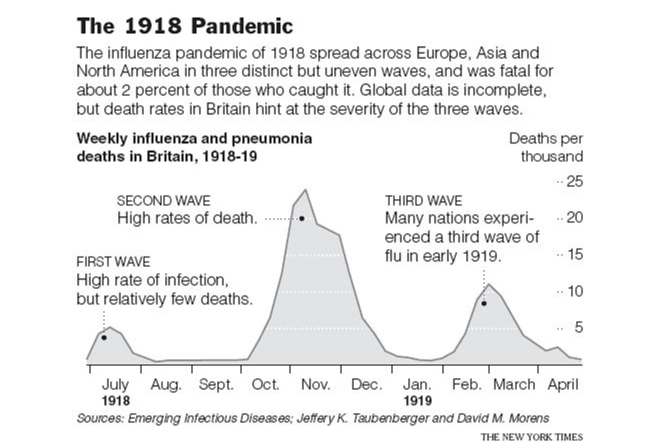Across sectors there's a greater focus on post-COVID-19 planning. Some of you are calling out opportunity for those who can be fast out of the blocks on the other side of the pandemic.
Almost all of you have such examples of positive, enabled leadership despite being in what one fellow business owner described last night as the "COVID-19 business model shredder" phase of this crisis. So today we zoom in on the positives.
1. Market Feedback
Intelligence about the impact of COVID-19 on specific financial services sectors, not published by media.
A. Technical difficulties
Speaking of Zoom, the rapid ascension of that platform has seen it transcend grammatically from ‘the name of a business’ to the higher status of verb and category noun. We now hear you saying “let’s Zoom” the way we say “I’ll Uber”, “Google it” and (dare we say it) Trumpism. The name is now both ubiquitous and synonymous with the COVID-19.
That said, repeated feedback suggests that technology issues remain pervasive for all of you in meetings, and that regular phone calls are still our trusty fail-safe. Often you’re finding the stumbling block is inadequate or overloaded home internet, WiFi or mobile networks.
All of you indicate that you’ve had to rapidly adjust and adapt to this crisis, and some partners you work with have done this better than others. What seems clear is that in future there will be even more focus on the agility and reliability of your technology stack.
We still hear advisers and planners particularly are struggling with the virtual work environment. Such professionals cite issues with offshoring paraplanning and compliance documentation due to offshore markets being disrupted and in partial/full lockdown. It’s partly just down to the fact paper-based businesses are struggling more than those who were already able to operate virtually.
B. The dance
Curiosity may have killed the cat, but complacency could end up killing a lot more people. We referenced Tomas Pueyo’s article titled The Hammer and the Dance in briefing note 8 exactly one month ago today. It looks like we are now beginning to enter this the second phase – the “Dance” where after “Hammering” the coronavirus, we can focus on containment until a vaccine is found.
Australia, in many respects, is the envy of the world. It looks like we’ve done a great job of flattening the curve and reducing the rate of new cases. Now our greatest risk may be complacency. Headlines tell us that supermarkets are beginning to lift restrictions on certain items, boast that case numbers remain stable, often each day there are zero reported new cases, and that there are now multiple vaccine trials in development. This is supporting, for many of you, new optimism and fresh thinking.
This shift in sentiment is welcome but (diverging from our usual rule not to talk about public health matters directly) we heed the lessons of history where the Spanish Flu, in its second wave, killed more people than the first (and the third). Singapore and other Asian countries are now experiencing this second wave. So far that’s likely contained as they apply the lessons of the first wave to move back to containment measures.
The reason we raise this is that this so-called dance, if not expected and anticipated in planning, might prove damaging to business resumption and confidence as well as to our own health.

Source: The New York Times
C. No more ‘nice-to-have’s’
‘Nice-to-haves’ have fallen by the wayside as budgets come under pressure due to reduced revenue and spending. One client had feedback from their intermediaries to "stop selling" as the focus shifts to support, rather than a hard sell marketing.
Additional feedback has reaffirmed this with clients across industries stating that resources are being diverted to essential business services, with non-essential services heavily slashed.
The prevailing response to budget pressure appears to be job preservation and cost cutting, getting staff to use annual leave and attempting to avoid stand downs. Some employers have sought to avoid pay cuts while some have opted for a fractional work approach with reduced pay, and some CEOs have simply cut staff salaries, in one case as much as 40%.
Anecdotal feedback is that Australians’ sense of insecurity is leading to an uptick in life insurance cover enquiries. There is a tension, however, between wanting to feel covered but also reducing household budgets (in the GFC the number of people covered by life insurance declined despite so much uncertainty).
2. Management responses
This section outlines how CEOs and their leadership teams are responding.
A. Internal communication must be encouraging and open
We mentioned this on the last call, but we cannot stress enough the importance for management’s internal messaging approach to be of genuine encouragement, not only to staff but to each other.
Concerns over the future remain high and therefore it is important to keep the lines of communication open to keep morale high and to ensure the team stays connected.
B. Routine to ease pressure
We have also mentioned this one previously, but with feedback continuing to come in about staff (and clients) feeling increasingly under pressure, it is important to have a daily routine set up and in place. Taking regular breaks might be easier said than done, but this is a marathon not a sprint, and avoiding team burnout is critical.
3. CEO guidance regarding coronavirus responses
This section provides our guidance on management and communication responses.
1. Audit your online presence
If you don’t make a habit of switching to incognito mode in your internet browser and Googling a few specific terms, now‘s the time to do so, or delegate it to your head of Corporate Affairs or external corporate affairs counsel / PR agency.
I’d start with your brand, trademarked products or proprietary intellectual property terms, then move on to your own name. Don’t go down the rabbit hole of each board member, colleague or direct reports, but make sure someone with carriage of reputation, marketing and PR or corporate communication does this.
It’s a grubby exercise, but this is publicly available information that directly affects what stakeholders think of you. You should find and manage it before everyone else does.
Bear in mind that online engagement is up right now – we’re all stuck at home, online.
2. Watch Google search trends: they’re essential input to planning (esp. content)
“Early release of super coronavirus” was third last night in rising real time searches (up 800%, albeit off a low base). This makes sense given we’re in the post-20 April window to apply via the ATO for early release of money in superannuation.
Harder to understand is that as at 8.15pm last night, it was third after ‘Kim Jong Un coronavirus’ (up 2100%) and ‘free Tafe courses NSW 2020 coronavirus’ (up 1250%)
Thanks to Google, we know what people are thinking. Today it’s whether dentists are open and which country is handling coronavirus best. Check that here, and look left to see the real-time trending searches mentioned above.
3. Go big now, in your thinking, and scale it to reality later. Triage your post-COVID19 future
a. Which goals, activities or commitments to stakeholders remain “must do”, regardless of the changed environment?
b. What new opportunities are available to you, aside from existing plans?
c. What does resumption, re-starting or re-invention look like?
These sound like motherhood questions, and they are -deliberately. While there’s no devil in the question detail, you might find (your own unconstrained) genius in the answers.
For many of you this is a tough time. There's going to be cost-cutting for some, enormous innovation for others, and change for everyone. Your own role (and mine) might be at risk, and also the future you thought you had almost certainly is.
But in that space – uncertainty and a different future – there’s also possibility. That takes positive, long-term and relatively unconstrained thinking. Now’s the best time many of us will ever get to use those muscles. Doing so might mean ‘more work’ but it might also produce (to quote Hollywood scriptwriters in the West Wing circa 2006) a moment in your own and the world’s history that’s so important it sees you “living the first line of my obituary right now”.
Some of your big goals or aspirations won't change, but how you’ll get there might, given the time or momentum lost during shutdown. Reaching those more practical goals might also be more possible with unconstrained thinking.
4. Appendix: How to help us help you
This briefing is collective intelligence gathered, anonymised and shared with you by my firm for the greater good. We’ve taken the view, based on client feedback, that the collective benefit to you all takes precedence over normal competitive pressures at a time like this.
This is an excerpt from one of our client COVID-19 CEO response briefings. For more COVID-19 response resources and guidance, visit our COVID-19 Response page.
If you’d like to discuss adjusting your communication strategy for the current times, please call us or fill out our contact form here.











